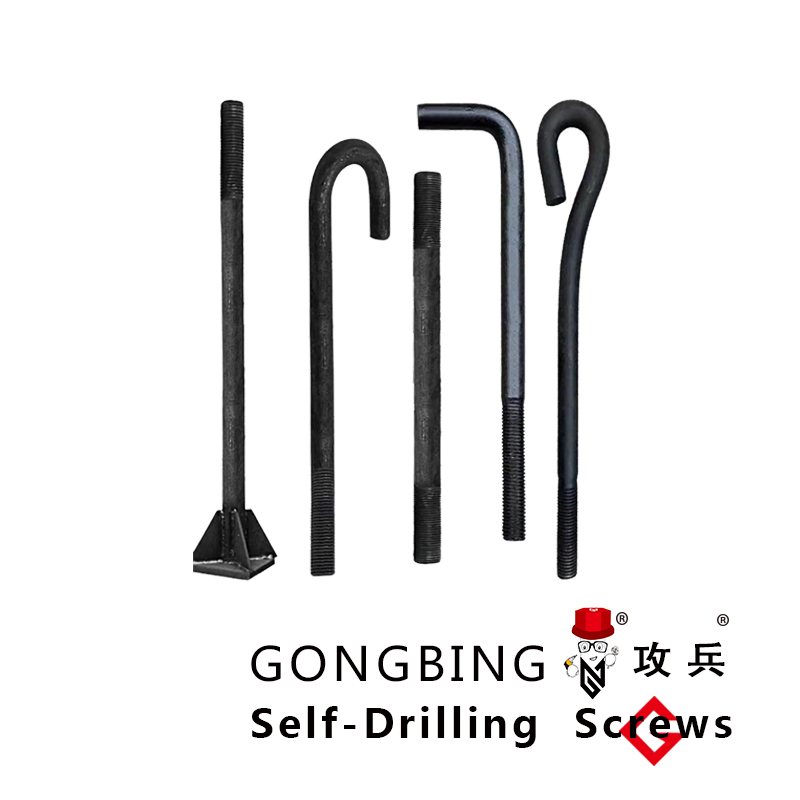Plastic Butterfly Screw for Versatile Applications and Easy Assembly Solutions
The Versatility of Butterfly Screw Plastic Fasteners
In the realm of manufacturing and construction, the importance of fasteners cannot be overstated. Among the myriad types of fasteners available today, the butterfly screw made of plastic stands out for its unique properties and versatile applications. This article delves into the design, functionality, and benefits of butterfly screw plastic fasteners, demonstrating why they are an essential tool for various industries.
Design and Construction
Butterfly screws, characterized by their distinct butterfly-shaped head, provide an ergonomic grip that allows for easy tightening and loosening without the need for additional tools. This design is particularly advantageous in settings where speed and efficiency are crucial, as it enables users to operate them quickly by hand.
When made from plastic, the butterfly screw offers several advantages over its metal counterparts. The most notable is its lightweight nature, which reduces the overall weight of assemblies and products. This is particularly important in aerospace and automotive applications where every gram matters. Moreover, plastic butterfly screws are resistant to corrosion and rust, making them ideal for outdoor use or in environments where exposure to moisture and chemicals is a concern.
Functionality
The functionality of butterfly screw plastic fasteners is rooted in their innovative design. Unlike traditional screws that require a screwdriver, the butterfly screw can be easily manipulated with the fingers. This provides the user with a more efficient method of assembly and disassembly, whether in manufacturing processes or in DIY projects.
Additionally, the head’s shape maximizes torque, allowing for a secure fit without the risk of over-tightening—an often overlooked advantage. The rounded edges of the butterfly head promote user comfort, reducing hand fatigue during repetitive tasks. This feature makes them especially suitable for applications in industries that involve frequent assembly and disassembly.
butterfly screw plastic

Applications
Butterfly screw plastic fasteners are employed across a wide range of industries. In the electronics sector, they are commonly used to secure enclosures and panels, allowing for easy access to internal components for repairs or upgrades. Their use in cabinetry and furniture manufacturing is also prevalent, as they provide an aesthetically pleasing finish without compromising functionality.
In the realm of construction, butterfly screws made from high-quality plastic serve as effective fasteners for temporary structures, signage, and lightweight installations. They are particularly valued in situations where aesthetic appeal is paramount, allowing for seamless integration into designs without the metal's bulkiness or contrast.
Another significant application of plastic butterfly screws is in the medical field. Given the stringent hygiene and safety requirements of medical equipment, plastic screws offer a non-conductive, non-corrosive solution that meets regulatory standards. They are used in various applications, from securing medical devices to fastening components within laboratory equipment.
Environmental Considerations
As industries increasingly focus on sustainability, plastic butterfly screws have gained popularity due to their potential for recycling and use of biodegradable materials. Many manufacturers are exploring eco-friendly plastics that minimize the environmental impact of production and disposal. This shift not only caters to consumer demand for sustainable practices but also positions companies as responsible stewards of the environment.
Conclusion
Butterfly screw plastic fasteners represent a remarkable intersection of practicality and innovation. Their design offers ease of use and ergonomic advantages, while their properties make them suitable for a multitude of applications across various industries. As we continue to seek out efficient and sustainable solutions in manufacturing and construction, the role of plastic butterfly screws will undoubtedly become more prominent. By recognizing their value and versatility, businesses and individuals alike can harness their potential to enhance productivity and, ultimately, the quality of their projects.
-
Weatherproof Plastic Expansion Anchors for OutdoorNewsJun.06,2025
-
Sustainability in the Supply Chain: Eco-Friendly TEK Screws ProductionNewsJun.06,2025
-
Load-Bearing Capacity of External Insulation FixingsNewsJun.06,2025
-
Double Head Bolts: Enhancing Efficiency in Industrial MachineryNewsJun.06,2025
-
Corrosion Resistance in Chipboard Screws: Coatings for Wholesale DurabilityNewsJun.06,2025
-
Butterfly Toggle Bolts : Enhancing Structural ResilienceNewsJun.06,2025
